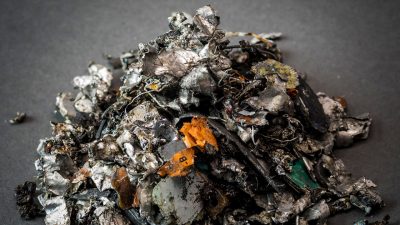Millions of Electric Cars Are Coming. What Happens to All the Dead Batteries?

All Global Research articles can be read in 51 languages by activating the “Translate Website” drop down menu on the top banner of our home page (Desktop version).
Visit and follow us on Instagram at @crg_globalresearch.
***
The battery pack of a Tesla Model S is a feat of intricate engineering. Thousands of cylindrical cells with components sourced from around the world transform lithium and electrons into enough energy to propel the car hundreds of kilometers, again and again, without tailpipe emissions. But when the battery comes to the end of its life, its green benefits fade. If it ends up in a landfill, its cells can release problematic toxins, including heavy metals. And recycling the battery can be a hazardous business, warns materials scientist Dana Thompson of the University of Leicester. Cut too deep into a Tesla cell, or in the wrong place, and it can short-circuit, combust, and release toxic fumes.
That’s just one of the many problems confronting researchers, including Thompson, who are trying to tackle an emerging problem: how to recycle the millions of electric vehicle (EV) batteries that manufacturers expect to produce over the next few decades. Current EV batteries “are really not designed to be recycled,” says Thompson, a research fellow at the Faraday Institution, a research center focused on battery issues in the United Kingdom.
That wasn’t much of a problem when EVs were rare. But now the technology is taking off. Several carmakers have said they plan to phase out combustion engines within a few decades, and industry analysts predict at least 145 million EVs will be on the road by 2030, up from just 11 million last year. “People are starting to realize this is an issue,” Thompson says.
Governments are inching toward requiring some level of recycling. In 2018, China imposed new rules aimed at promoting the reuse of EV battery components. The European Union is expected to finalize its first requirements this year. In the United States, the federal government has yet to advance recycling mandates, but several states, including California—the nation’s largest car market—are exploring setting their own rules.

Materials scientist Dana Thompson develops solvents for extracting valuable metals from spent car batteries. (Source: FARADAY INSTITUTION)
Read the full article here.
*
Note to readers: Please click the share buttons above or below. Follow us on Instagram, @crg_globalresearch. Forward this article to your email lists. Crosspost on your blog site, internet forums. etc.
Featured image: A shredded electric vehicle battery can yield recyclable metals, but it is often cheaper for batterymakers to use new materials. (Source: ARGONNE NATIONAL LABORATORY)

